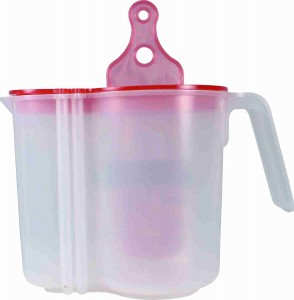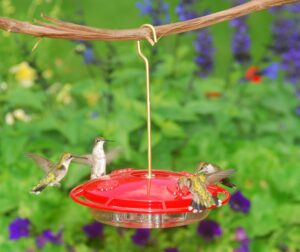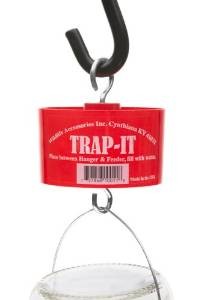Here’s A quick, easy guide to making hummingbird food:
Making hummingbird food is easy. If you have some white granulated table sugar and some tap water, you’re just minutes away from the quick,  easy task of making hummingbird food. Making hummingbird food is fun and will save you some money. It will also save you trips to the store to get nectar when you run out.
easy task of making hummingbird food. Making hummingbird food is fun and will save you some money. It will also save you trips to the store to get nectar when you run out.
There is a sense of joy you will feel when hummingbirds come to the feeder to get homemade hummingbird food that you yourself have made.
Making Hummingbird Food:
For making hummingbird food you will use sugar and water at a 4 parts water to 1 part sugar ratio. This 4 to 1 ratio will make a hummingbird nectar that’s about 20% sugar, just like the percentage of sugar that’s found in the flower nectar that hummingbirds drink.
1.-in a pan heat the water and sugar. Stir the mixture to dissolve the sugar.

Never measure ingredients again
2.-when the mixture comes to a boil, boil the mixture for about 2 minutes. This will release any chlorine in the water and kill any mold spores or bacteria in the sugar.
3.-after boiling for 2 minutes take the hummingbird nectar off the heat and let cool.
4.-add the homemade hummingbird food to the feeder and you can store any excess nectar in the frig. The excess hummingbird nectar will keep in the frig for up to 2 weeks.
To have luck making hummingbird food and feeding hummingbirds, you will have to keep your feeder clean and make sure the nectar in your hummingbird feeder is always fresh.
If you change your nectar often enough, before the sugar starts to ferment, keeping your feeder clean won’t be too much of a chore.
If you let your nectar ferment, mold will grow in your nectar and on your feeder. This will make cleaning your feeder quite a bit harder.
Use Songbird Essentials Nectar Aid Self Measuring Pitcher and never measure ingredients again. Make any amount and the ingredients are measured for you.
Guide for when to change the nectar
Letting the nectar ferment encourages mold growth, which makes the cleaning process more difficult. To avoid this, follow the chart below for  recommended nectar changes based on the temperature. The hotter it gets, the more frequently you’ll need to replace the nectar.
recommended nectar changes based on the temperature. The hotter it gets, the more frequently you’ll need to replace the nectar.
High temperatures…………Change after
71-75……………………………6 days
76-80……………………………5 days
81-84……………………………4 days
85-88……………………………3 days
89-92……………………………2 days
93+………………………………change daily
Whenever you notice the nectar becoming cloudy, it’s time to replace it. If the nectar is cloudy and you spot black specks of mold or mold on the feeder, it’s a sign that you’ve waited too long and should start changing it more frequently. If you delay too much, yeast will begin to ferment the sugar, leading to mold and harmful bacteria growth in the nectar and on the feeder, which can be dangerous for hummingbirds.
Tips for Success:
To ensure a steady supply of fresh nectar for your hummingbirds, keep your feeder clean and replace the nectar regularly. If you change the nectar before it starts fermenting, cleaning the feeder will be much easier.
Letting the nectar ferment encourages mold growth, which makes the cleaning process more difficult. To avoid this, follow the chart below for recommended nectar changes based on the temperature. The hotter it gets, the more frequently you’ll need to replace the nectar.
Feeder Cleaning Tips:
- Rinse your feeder: Each time you change the nectar, be sure to rinse the feeder thoroughly with hot water.
- Weekly cleaning: About once a week, clean your feeder with a 10% white vinegar to water solution. This helps keep your feeder free of mold and buildup.
- Dealing with mold: If you forget to change the nectar and mold starts to grow, you’ll need to deep clean your feeder. Soak it in a bleach-water solution—mix 1/4 cup of bleach in a gallon of water—and let it soak for about an hour. You may also need to use a hummingbird feeder brush to scrub away any mold.
Click on the link for a detailed guide to help you clean your hummingbird feeder for those times when the nectar is not changed soon enough and mold starts to grow.
| Small bottle brushes and pipe cleaners are always helpful to dislodge mold inside the feeder and in the feeding ports. It is necessary to have a clean mold free feeder to attract hummingbirds and to keep them healthy. |
Click on the link to view other articles about making hummingbird food.
Hummingbird Resources
U.S. Fish and Wildlife Service – Hummingbird Conservation
This site offers detailed information about various hummingbird species, their habitats, and conservation efforts. It also provides resources on how to protect these fascinating birds.
National Park Service – Hummingbird Resources
The National Park Service offers insights into hummingbird species found in national parks, their behaviors, and their role in ecosystems, along with tips for observing them.
Smithsonian National Museum of Natural History – Birds: Hummingbirds
This resource provides educational materials on the role of hummingbirds in pollination and biodiversity, backed by scientific research and exhibits from the Smithsonian.




